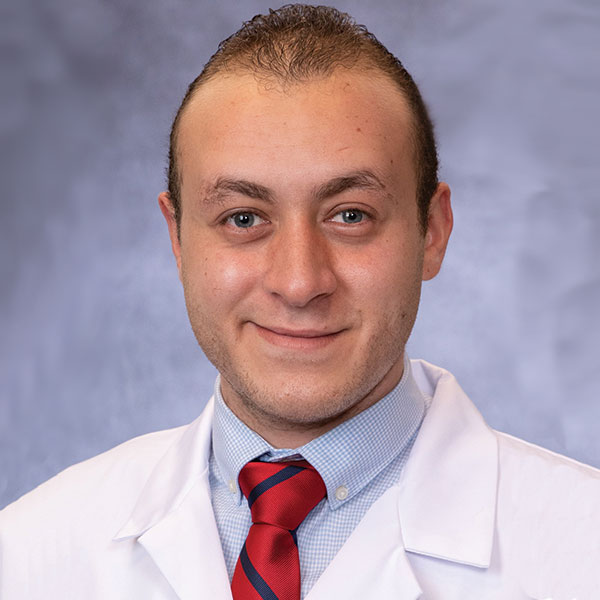For the FITs | Time to Embrace the Future: AI-Assisted ECG Detection of VHD, SHD

In the space of cardiovascular innovations, artificial intelligence (AI) holds promise for transformative solutions in clinical practice to be added to the toolkit for early detection and management of cardiovascular disease, including valvular and structural heart diseases (VHD, SHD).
Despite a growing interest in AI within the cardiovascular world, implementing AI in clinical workflows remains a challenge, particularly for fellows in training (FITs) and cardiologists with limited AI expertise. The solution seems to lie in agreeing on a feasible way to apply such technology in the daily workflow of clinicians.
Moreover, as this technology becomes increasingly sophisticated, key questions arise for FITs: Are they lagging behind? Or should they be at the forefront of adopting an AI-augmented approach?
Recently, AI-assisted algorithms have emerged within various areas of cardiology, including heart failure, echocardiography and electrocardiography (ECG), enabling precision medicine. The potential of AI in ECG interpretation, a simple noninvasive tool used by FITs on a daily basis, illustrates the imperative for FITs to embrace this evolving landscape.
Upstream Management Anchors on Early Detection
Numerous efforts have been directed toward advancing AI-augmented ECG algorithms screening for patients with VHD and SHD, including hypertrophic cardiomyopathy (HCM) and amyloidosis.1-3
AI-augmented ECG interpretation offers several benefits facilitating early diagnosis.
First, swiftly analyzing large datasets leads to faster and more accurate identification of subtle patterns and abnormalities that might elude the most experienced human eye, leading to earlier and more precise diagnoses.
Second, expeditious diagnosis allows prompt intervention, and early follow-up which can significantly improve patients' outcomes. Moreover, well-trained algorithms can help reduce the potential for human error in interpretation, thereby enhancing the reliability of diagnosis.4
The Learning Curve For FITs
What is the opportunity for AI to revolutionize health care? Click here to hear from ACC's Chief Innovation Officer Ami B. Bhatt, MD, FACC, in a recent Cardiology cover story.
Interested in innovation? Click here to join ACC's Health Care Innovation Member Section.
Click here to read about the potential of combining natural and artificial intelligence in cardiac testing and patient encounters.
As with any new technology, gaining a basic understanding of AI requires a learning curve. Getting up to speed with the capabilities and limitations of AI and machine learning can be achieved through several avenues.
Some FITs may consider pursuing a dedicated AI fellowship in cardiovascular medicine,5 although currently there are only a handful of programs. Other routes may be graduate certificate programs6-8 or online learning, with several educational bodies providing online and part-time courses/certificates.9-11
The next step after acquiring a basic understanding of AI and machine learning would be implementing the knowledge in research and quality improvement projects either within one's own institution or through a partnership with industry focused on AI technologies in health care.
Commercialization and Applicability in Clinical Practice A plethora of AI algorithms have emerged in cardiology. However, their seamless integration into real-world practice by both FITs and cardiologists remains a barrier given the enormous statistical support and expertise needed to navigate such algorithms.
Although these algorithms exhibit remarkable diagnostic potential, their practical utilization demands a more strategic approach.
A promising solution involves coupling well-validated AI algorithms with platforms capable of effectively implementing them within clinical workflows. Several illustrative examples were recently granted by the U.S. Food and Drug Administration breakthrough device designation for incorporation into U.S. hospital-based electronic medical records (EMRs), some of which will soon roll out to the market.
A few promising platforms include Viz.ai (for HCM detection in the general population), Tempus (for atrial fibrillation prediction in asymptomatic patients), ECGvision-TTR/Ensight-AI (Yale's Cardiovascular Data Science Lab (for ATTR cardiomyopahty), and Anumana.ai (for amyloidosis detection).12-14 Such models will help bridge the gap between AI with its limitless capabilities and practical application in a real-world setting.
Delivering AI-powered ECG detection of disease patterns using these platforms involves several steps (Figure). First, live data from ECG reports are uploaded to a server, followed by AI-augmented analysis that automatically detects and measures the disease likelihood.
Following this, the platform triggers an alert to the appropriate specialist/clinician or research team who then takes appropriate action. This process would streamline the identification of "at risk" patients and shorten the timeframe for them to receive specialized care.
Notably, a valuable feature in some of these platforms is the ability to implement trigger actions via a mobile application (HIPAA-protected) providing immediate live access to the flagged ECGs with high likelihood of disease pattern.
Finally, clinicians can act upon it in real-time by scheduling an outpatient appointment and/or ordering further imaging modalities to confirm the suspected diagnosis.15
Indeed, these platforms would enable FITs and cardiologists to harness the true power of AI through the real-time early identification of "at risk" populations, thereby enhancing diagnostic accuracy and patient outcomes.
Currently, more efforts are geared to extend AI-augmented platforms to detect asymptomatic moderate/severe aortic stenosis, which would help with upstream identification and management of patients with aortic stenosis.1,16
As AI evolves, partnership between FITs, seasoned cardiologists and industry in embracing machine intelligence promises a new era of precision and efficiency for the diagnosis of valvular and structural disease and more, benefiting patients across the spectrum of cardiovascular diseases.
Look for the ACC's new AI in Cardiology resource center later this month at ACC.org/InnovationProgram.

This article was authored by Omar M. Abdelfattah, MD, a clinical fellow in the health and tech section, division of cardiovascular medicine at the University of Texas Medical Branch in Galveston, TX.
References
- Elias P, Poterucha TJ, Rajaram V, et al. Deep learning electrocardiographic analysis for detection of left-sided valvular heart disease. J Am Coll Cardiol 2022;80:613-26.
- Grogan M, Murphree DH, Shelly M, et al. Artificial-intelligence enhanced screening for cardiac amyloidosis by electrocardiography. J Am Coll Cardiol 2021;77:527.
- Ko W-Y, Siontis KC, Attia ZI, et al. Detection of hypertrophic cardiomyopathy using a convolutional neural network-enabled electrocardiogram. J Am Coll Cardiol 2020;75:722-33.
- Herman R, Meyers HP, Smith SW, et al. International evaluation of an artificial intelligence-powered ecg model detecting acute coronary occlusion myocardial infarction. Eur Heart J - Digit Health 2023:ztad074.
- Department of Medicine. Northwestern Medicine Bluhm Cardiovascular Institute: Artificial Intelligence (AI) Fellowship in Cardiovascular Disease.
- Harvard Chan School Executive and Continuing Professional Education Business: Applications for AI in Health Care Certificate of Specialization program. Available here.
- The Ohio State University: Graduate Certificate Artificial Intelligence in Digital Health. Available here.
- University of Louisville: Graduate Certificate in Artificial Intelligence in Medicine. Available here.
- Mayo Clinic. Artificial Intelligence in Cardiology. Available here.
- Coursera: AI for Medicine Specialization, DeepLearning.AI. Available here.
- Coursera: AI for Medicine Specialization, Stanford University. Available here.
- anumana.ai. Anumana.Inc., Diagnostic Electrocardiography Pipeline. Accessed Dec. 17, 2023. Available here.
- U.S. Food and Drug Administration. Device Classification Under Section 513(f)(2)(De Novo) Viz HCM. accessdata.fda. 2023. Accessed Dec. 17, 2023. Available here.
- Walter M. FDA Grants Breakthrough Device Designation to Tempus' Atrial Fibrillation ECG Analysis Platform. Cardiovasc Bus March 24,2021. Available here.
- viz.ai. Viz HCM, End-to-end approach for detecting and directing hypertrophic cardiomyopathy (HCM) patients. Accessed Dec. 17, 2023. Available here.
- Ito S, Cohen-Shelly M, Attia ZI, et al. Correlation between artificial intelligence-enabled electrocardiogram and echocardiographic features in aortic stenosis. Eur Heart J - Digit Health 2023;4:196-206.
Clinical Topics: Heart Failure and Cardiomyopathies, Valvular Heart Disease, Acute Heart Failure
Keywords: Cardiology Magazine, ACC Publications, Artificial Intelligence, Valvular Diseases, Heart Valve Diseases, Heart Diseases, Heart Failure, Early Diagnosis
< Back to Listings
